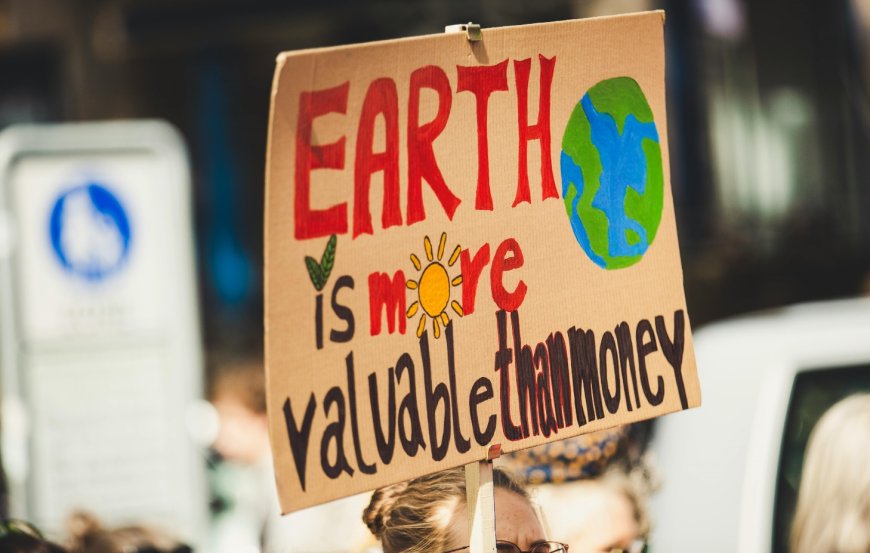The Impact of Climate Change on Public Health

Often presented as an environmental and financial burden, climate change is becoming acknowledged as a major public health issue. Not only are changing ecosystems but also human health is being threatened in unheard-of ways by the rising global temperatures, changing weather patterns, and increasing frequency of catastrophic events. The several health effects of climate change are investigated in this paper together with several possible solutions to lessen their effects.
Medical Consequences of Climate Change
Direct as well as indirect, the health consequences of climate change include physical, psychological, and social well-being. The following are some of the most urgent health issues connected to climate change:
1. Illnesses Linked to Heat
Rising world temperatures have produced more frequent and severe heat waves. Extended excessive heat can induce heat exhaustion, heatstroke, and even death. Vulnerable groups including elderly adults, children, outdoor laborers, and those with pre-existing medical issues are more likely23. According to 2023 research, climate change causes people to face, on average, 50 more days of health-threatening heat6.
2. Cardiovascular and Respiratory Disorders
Climate change increases ground-level ozone, wildfire smoke, and pollen levels, hence aggravating air pollution. Bad air quality fuels respiratory problems including asthma and chronic obstructive pulmonary disease (COPD) as well as cardiovascular problems including heart attacks and strokes. 25.? Because they live near highways or industrial sites, marginalized groups can experience disproportionate exposure to air pollution.
3. Contagious Diseases
Changing weather patterns are affecting the habitats of disease vectors such as mosquitoes and ticks, therefore allowing the dissemination of infections including malaria, dengue fever, and Lyme disease into formerly uninhabited areas. Warmer temperatures further stretch the mating seasons for many vectors, hence raising the likelihood of outbreaks36.
4. Water and Food Insecurity
Droughts, floods, and extreme weather all produce climate-related disruptions in agriculture that compromise food security all around. Undernutrition results from lower food yields, particularly in low-income nations mostly dependent on subsistence farming. Likewise, contaminated water supplies from floods or drought aggravate waterborne diseases including cholera.
5. Mental Health Difficulties
The psychological cost of climate change is considerable. An increasing mental health problem is caused in part by trauma from extreme weather occurrences, fear about the future—often referred to as "climate anxiety"—and displacement resulting from natural disasters. The second is Particularly fragile to these pressures are young individuals.
6. Damage from Extreme Storms
Directly causing injury or death are hurricanes, floods, wildfires, and other extreme disasters via drowning, burns, or trauma. These calamities also compromise the infrastructure of healthcare, thereby making it more difficult for impacted populations to get treatment during an emergency25.
Strategies for Reducing Climate-Related Health Risks
Although the problems presented by climate change seem overwhelming, there are doable solutions meant to lessen their effects on public welfare.
1. Changing to Sustainable Energy
Curbing greenhouse gas emissions that propel climate change depends on less reliance on fossil fuels. Turning to alternative energy sources like solar or wind power not only lowers emissions but also improves air quality, hence lowering the incidence of respiratory problems45.
2. Improving Nature Areas
Green areas included in urban design serve to reduce urban heat islands and enhance air quality. By encouraging community engagement and hence lowering stress, parks and tree-lined avenues help to lower local temperatures and offer mental health advantages.
3. Developing Medical Systems
Healthcare systems must grow more robust to manage disasters brought on by climate change. This involves "climate-proofing" healthcare facilities by making sure they may run during severe weather occurrences and lowering their carbon footprint by means of energy-efficient technologies45. Hospitals might, for example, choose sustainable waste management techniques or make investments in solar panels or other renewable energy sources.
4. Advocating Eco-friendly Farming
Using sustainable agricultural methods including water-efficient irrigation and crop variety can help to ensure food supplies in view of changing climatic circumstances. Encouragement of plant-based diets not only encourages better eating but also lessens the environmental impact of food manufacture.
5: Early Warning Systems
Early warning system investments for severe weather events provide communities time to get ready for hurricanes, floods, or heat waves, therefore saving lives. Public education initiatives concerning climate hazards and protective actions should be linked with these systems69.
6. Correcting Social Injustice
Underprivileged groups that usually lack the means to adapt or recover from its effects are disproportionately affected by climate change. Building resilience against climate hazards depends on policies meant to lower social inequalities—like access to healthcare or inexpensive housing in safe areas28.
Policy and Cooperation: Their Significance
Effective mitigating calls for a coordinated effort from governments, businesses, communities, and individuals:
· From urban planning to disaster management systems, governments have to include health issues at all levels of their climate policy.
· Global Cooperation: Uniting countries towards carbon reduction targets is much aided by international agreements such as the Paris Accord.
· Public awareness of the co-benefits of climate action, e.g., better air resulting in fewer respiratory diseases—may help to generate more support for mitigating initiatives.
The junction of public health and climate change emphasizes how urgently this worldwide issue has to be addressed holistically. There is much that can be done to safeguard human health in a warming environment from lowering emissions through the acceptance of renewable energy to fortifying healthcare systems able to endure climate shocks.
Time is important, though. The health effects will only get worse without a quick response at both local and global levels; this will disproportionately affect vulnerable groups while taxing healthcare systems all around. Giving sustainable practices and fair policies top priority now would help not only our earth but also ensure the welfare of the next generations.
What's Your Reaction?
 Like
0
Like
0
 Dislike
0
Dislike
0
 Love
0
Love
0
 Funny
0
Funny
0
 Angry
0
Angry
0
 Sad
0
Sad
0
 Wow
0
Wow
0





































